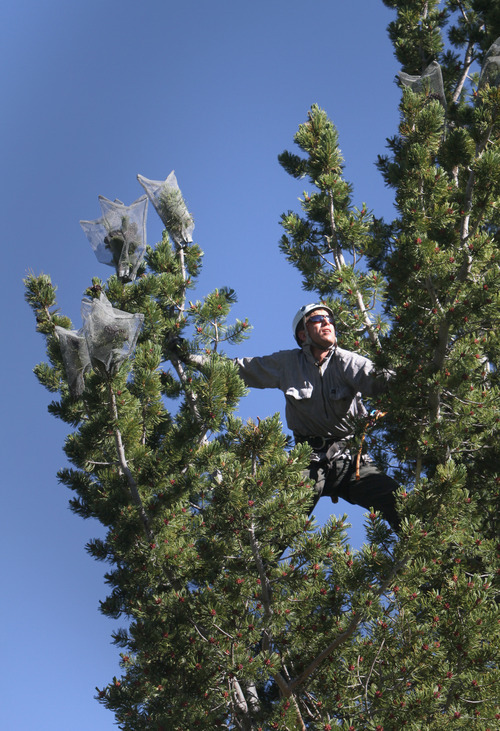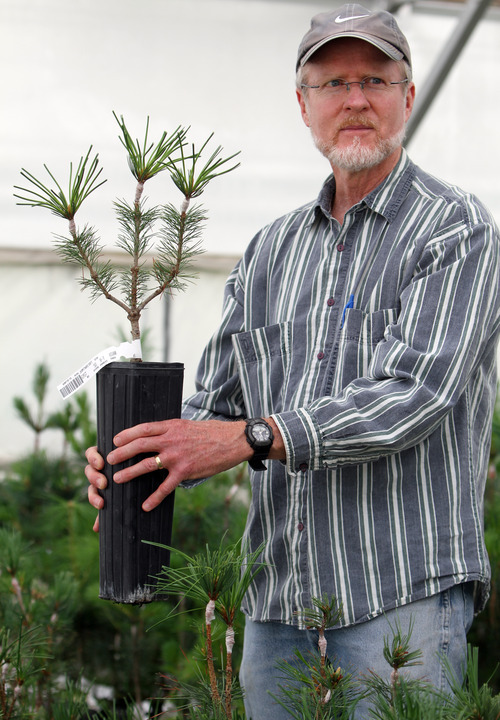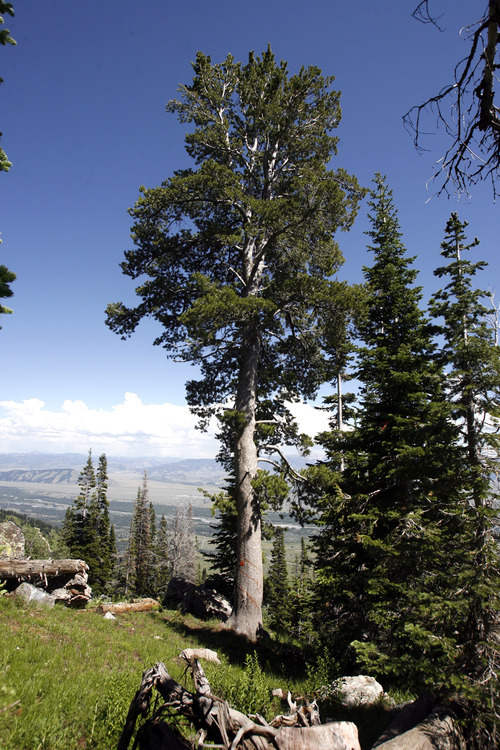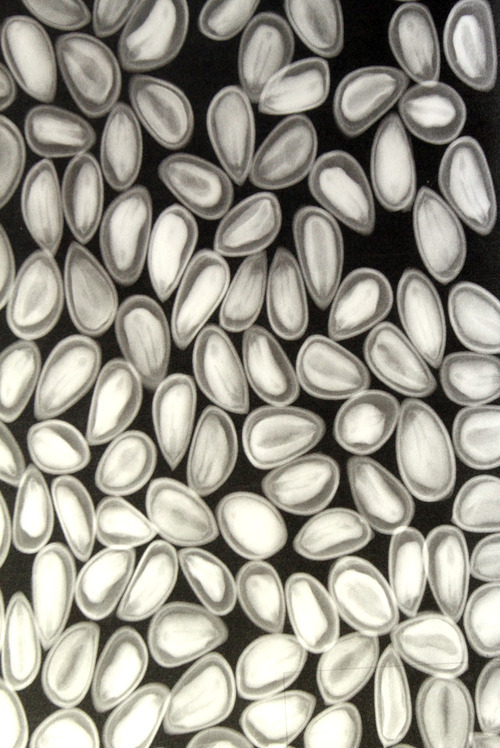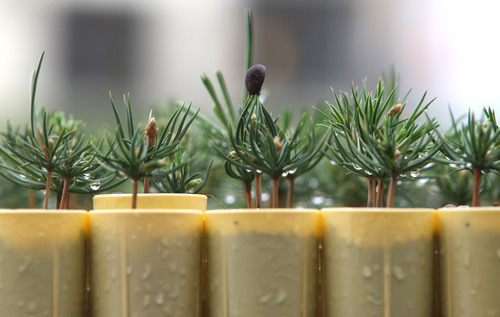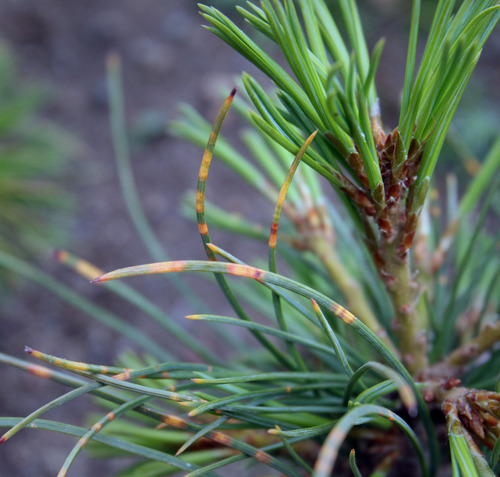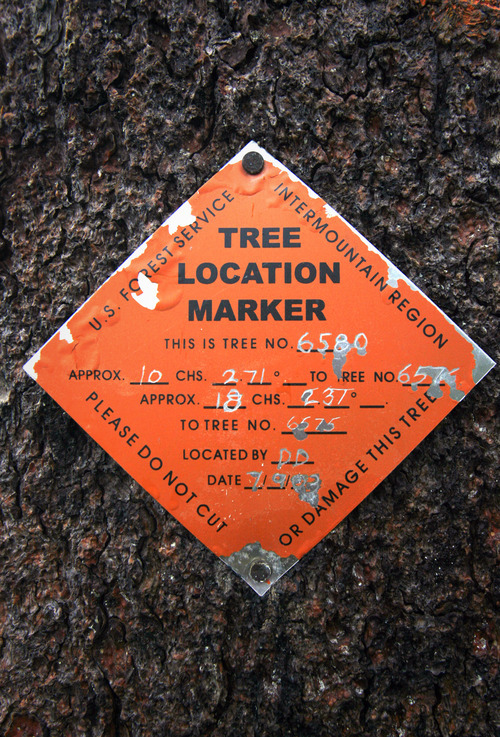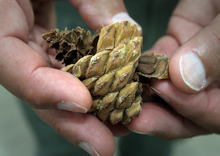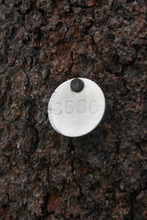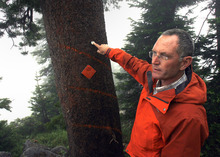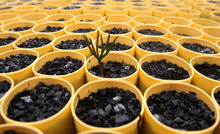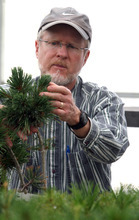This is an archived article that was published on sltrib.com in 2011, and information in the article may be outdated. It is provided only for personal research purposes and may not be reprinted.
Coeur d'Alene, Idaho • Nobody gets prenatal care like whitebark pines are enjoying these days.
The tree that has quickly shot to the top of regional foresters' preservation list gets regal treatment in an effort to rescue fast-vanishing alpine forests. The U.S. Forest Service has embarked on a nursery program with all the deliberation of a family pursuing in vitro fertilization.
Except this costs a lot more per mother and takes decades.
It's a price the government has decided to pay for an ecologically important tree that biologists this year ruled is threatened with extinction in the Yellowstone area.
"It's kind of an emergency situation up there," said David Foushee, a horticulturist who is testing to find the healthiest seed sources.
The agency will spend $200,000 on whitebark programs this year at its Coeur d'Alene Forest Nursery. That includes raising 160,000 seedlings that national forests and others have requested for immediate planting.
But the big-ticket item for posterity is a plan to grow disease-resistant whitebarks, sprinkling disease spores on seedlings and then cloning the parents of those that prove hardy. It's selective cultivation, not genetic modification. By the time a clone produces seeds, the Forest Service will have spent $31,000 to $37,000 per mama tree.
Just preparing the seed from this species is a chore.
The nursery handles them in a room of machines resembling a high school wood shop. The cones, sealed tight by purple resin, first require warm air drying and then plucking by hand. The seeds, the size of big corn kernels, then get an X-ray to see if they're mature.
The winners go into a coffee can lined with sandpaper for tumbling that scratches the armor. Then they go into a freezer at 0 to 6 degrees Fahrenheit for an artificial winter like they would normally endure before germination.
"It's pretty amazing what we have to go through," nursery superintendent Joe Myers said, "to duplicate what nature is doing,"
Foresters around the Northern Rockies have identified hundreds of apparently disease-resistant adult trees whose seeds are germinated in tubes in a greenhouse here, 450 highway miles from Yellowstone National Park.
One such tree, 139-year-old No. 6580, lords over a knob of smaller firs at Jackson Hole Mountain Resort. After designating it a so-called "plus tree" for the program because of its apparent lack of disease, Bridger-Teton National Forest vegetation manager Karl Buermeyer learned that the resort planned to fell this majestic specimen for a new lift.
It was a startling prospect for a mountain that already has lost, by resort estimates, 80 percent of its whitebarks to either blister rust or mountain pine beetles. But the nursery hadn't yet confirmed whether the tree would produce resistant seedlings to become an "elite" tree worthy of propagation.
The resort has helped preserve trees, spraying repellent on 350 whitebarks and putting anti-beetle pheromones on 1,600 more this summer. But ski planners wanted this one's perch, because it was in line with the best spot to place a tower support for a mid-mountain lift accessing the Bridger Restaurant at a 9,100-foot crest.
Moving the lift would cost the resort, which leases Forest Service land, thousands of dollars. Picking a new tree for the program and starting over with seed collection would cost the Forest Service $30,000. The forest supervisor wrote a "strongly worded letter," Buermeyer said, and the resort moved the lift.
"I really hope now that it's an elite tree," resort planner Bill Schreiber said on a ride up the mountain's gondola this summer.
"If it's not, Bill's going to hate me," Buermeyer said.
"'Hate' is a little strong," Schreiber said.
The tree stands just uphill from a patch of whitebark ghosts, limbs spiraled to the north from more than a century of cold winds.
Beneath it are a few small whitebarks struggling to stretch skyward, including a 4-foot stick bent to the shape of a plumber's elbow pipe by snow or the memory of a downed log.
Whether No. 6580 really is elite will take a few years to sort out through seedlings' exposure to disease. In the meantime, because the nursery initially thought it was in rescue mode for a doomed tree's offspring, Buermeyer sent 50 cuttings for grafting onto roots that will give them a few years' jump toward cone production, which usually takes a seedling several decades to achieve.
After Foushee's tests, the regional geneticist will bestow elite status on parent trees in the next year or so, then request grafts from them for planting in a seed orchard near Bozeman, Mont.
Tree No. 6580's expedited progeny, whether elite or not, will go to the orchard sooner and should produce seeds to repopulate Jackson Hole in about 20 years.


